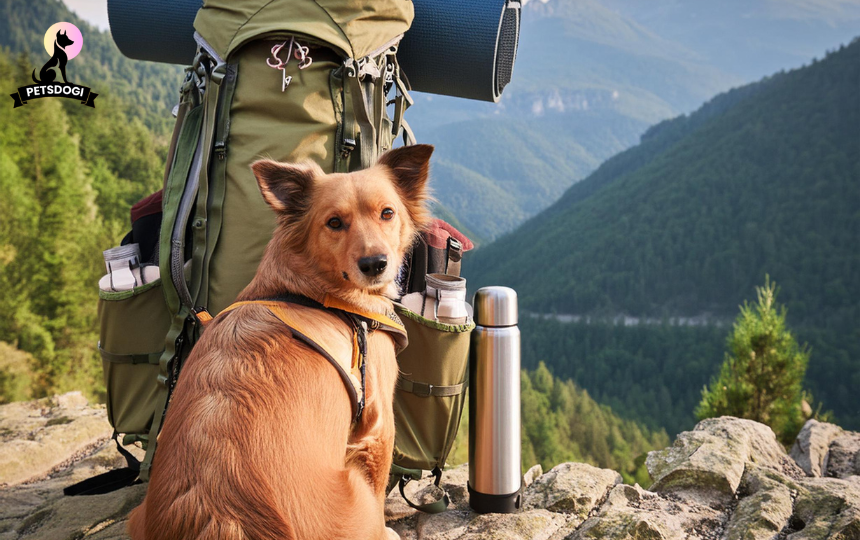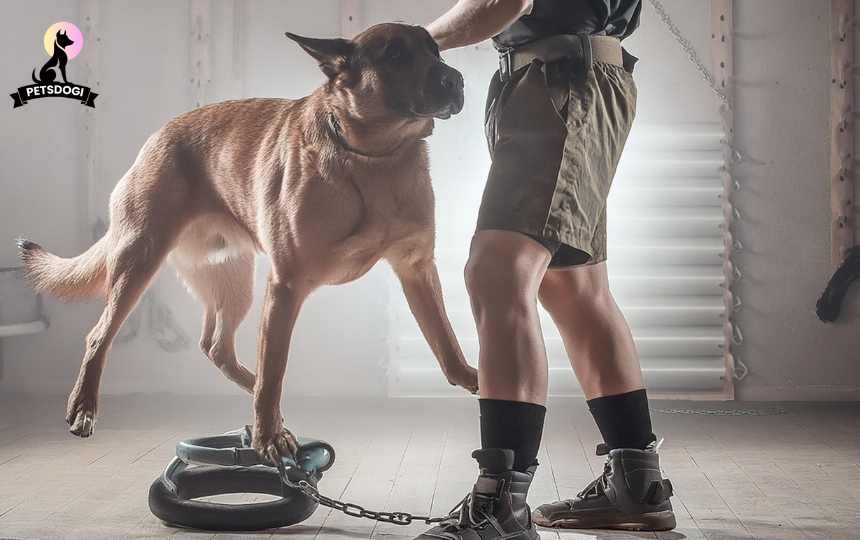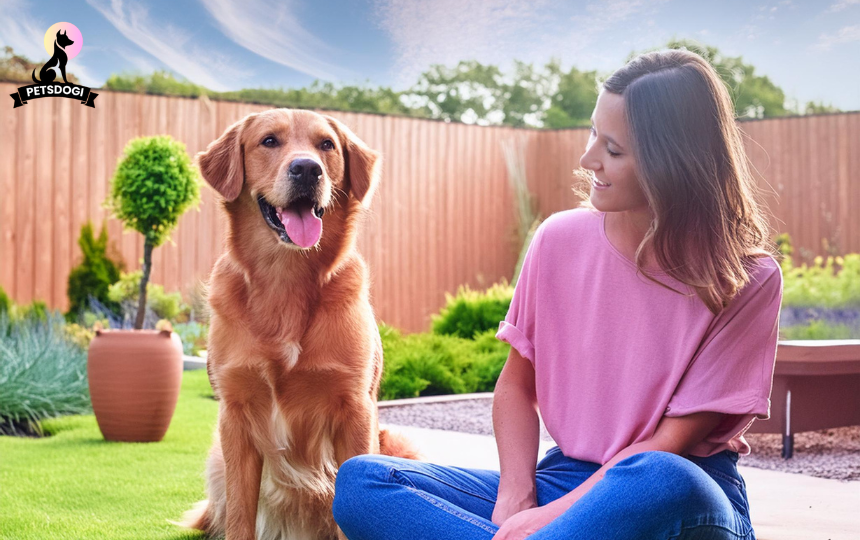deaf dogs: Greetings from the world of training our cherished canine friends who are deaf! Teaching deaf dogs basic orders with hand signals may seem like a special difficulty, but it opens up a whole new world of understanding and communication. This post will walk you through useful actions, efficient hand signals, and crucial advice to guarantee a fruitful training experience. These insights will provide you the tools you need for successful training, whether you’re a new pet parent to a deaf puppy or hoping to strengthen your relationship with your elderly dog who is suffering from hearing loss. Together, let’s start this fulfilling path of friendship and connection with your deaf dog.
-
Recognizing the Training Requirements for Deaf Dogs
Dogs that are deaf, whether from birth or through age, are nonetheless capable of learning and communicating. However, training deaf dogs necessitates a special comprehension of their sensory environment.
The Deaf Dog:
Adopting a deaf puppy into your family has advantages and disadvantages of its own. A harmonious partnership requires understanding their viewpoint and modifying teaching approaches. Overcoming early challenges mostly requires patience and positive reinforcement.
The advantages of having a deaf dog
There are many benefits to owning a deaf dog companion, even though training a deaf dog may seem difficult. These dogs frequently acquire extrasensory perception, which strengthens their bond with their owners. Examining these advantages aids in changing the conversation from difficulties to the special pleasures of taking care of a deaf dog.
-
Training Basics: Hand Signals and Sign Language
Teaching Hand Signals to a Deaf Dog:
Visual signals are used in place of spoken orders while training a deaf dog. Your dog can understand and comply with a variety of commands thanks to hand signals, which act as a bridge for communication. The introduction of hand signals will be covered in detail in this part, with a focus on consistency and positive reinforcement.
Teaching a Basic Order, Such as “Sit”:
A simple instruction like “sit” is the first step toward effective communication. Giving pet owners a step-by-step tutorial on how to teach this command via hand gestures can be helpful. Repetition and patience are essential components in helping to reinforce the desired behavior.
Getting the Attention of Your Dog:
A deaf dog’s attention must be captured for training to be effective. We’ll talk about strategies that use light vibrations, visual signals, and thoughtful placement. It all starts with knowing how to focus your dog’s attention so that training can proceed smoothly.
Safeguarding a Deaf Dog:
When teaching a deaf dog, safety must always come first, especially in situations where the dog might not be able to hear possible threats. This section will cover tips for setting up a safe training area, adding visual indicators for security, and making sure the training atmosphere is upbeat and stress-free.
-
Hand Signal Commands for Deaf Dogs
How to Attract the Attention of Your Deaf Dog:
Using Light: Using visual cues, such as on and off lights, might help your deaf dog focus and pay attention.
- Use vibrations: Giving your dog a tactile alert can be accomplished by stomping the ground or by wearing a vibrating collar.
How To Teach Other Obedience Cues with Hand Signals:
- • A Guide to Teaching Your Dog to Gaze at You:
- Catching the Behavior: Using positive reward to promote eye contact.
- Introducing Hand gestures Gradually: Teach your dog to associate certain hand gestures with gazing at yo
- How To Teach Other Commands:
- Sit with a Hand Signal: a comprehensive tutorial on teaching the “sit” command using hand signals.
- Lay Down with a Hand Signal: Adding the command “lie down” to the training.
A guide on teaching your deaf dog to come when indicated. • Come with a Hand Signal.
Why Are Hand Signals Important for All Dogs?:
- Expanding the scope beyond deaf dogs, this section highlights the universal benefits of integrating hand signals into training routines. Clear communication and strengthened bonds are emphasized as key advantages.
How To Teach a Gentle Touch for Attention:
- Introducing a gentle touch as a non-verbal form of communication fosters a deeper connection between you and your dog. This section guides you through the process of teaching your dog to respond to a gentle touch, reinforcing positive behavior.
-
More Tips and Considerations for Deaf Dog Training
Owners’ Role in Training:
- Training a deaf dog demands increased physical involvement from owners. Understanding and adapting to the need for hands-on communication is essential for successful training sessions. This section provides insights into the active role owners play in the training process.
Other Concerns When Training a Deaf Dog:
- Deaf dogs, being more reliant on visual and tactile cues, can be easily startled. Owners need to be mindful of their dog’s surroundings and approach them with care during training. This section addresses common concerns and offers practical tips for creating a safe and comfortable training environment.
Exploring Hand Signals and Cues:
- Delving deeper into the world of hand signals, this part of the article explores various cues that can be incorporated into training routines. From basic commands to more advanced cues, understanding the versatility of hand signals enhances the communication between owners and their deaf dogs.
How do hand signals or cues work?:
- A brief explanation of the principles behind hand signals, emphasizing the importance of consistency and positive reinforcement.
Which cues and signals do I need to teach the dog?:
- Tailoring commands to your dog’s needs and daily interactions, this section provides guidance on selecting the most relevant cues for effective communication.
How do I begin teaching and training my deaf dog?:
- A step-by-step approach to initiate training, covering the early stages of building trust and establishing a communication foundation.
Are there any other training considerations for a deaf dog?:
- Exploring additional factors such as adjusting training techniques for different breeds and individual preferences.
What about special training collars?:
- Briefly discussing the use of special collars designed for deaf dogs, providing an overview of available options and their potential benefits in training sessions.
-
Benefits of Owning a Deaf Dog
Owning a deaf dog comes with a unique set of advantages that contribute to a fulfilling and rewarding companionship.
Enhanced Senses:
- Deaf dogs often develop heightened senses of sight and smell to compensate for their lack of hearing. This can lead to a more attentive and perceptive pet, attuned to their environment in ways that go beyond the capabilities of hearing dogs.
Deepened Bond with Owners:
- Communicating with a deaf dog relies heavily on visual cues and physical touch. This necessity for increased physical connection fosters a strong bond between the dog and its owner. The reliance on non-verbal communication creates a deeper understanding and connection between the two.
Increased Owner Awareness:
- Caring for a deaf dog necessitates heightened awareness from owners. This includes being attuned to the dog’s body language, visual cues, and creating a safe environment. This increased attentiveness often leads to more engaged and responsible pet ownership.
Positive Impact on Owners’ Lives:
- The challenges and joys of caring for a deaf dog can have a positive impact on the lives of the owners. From boosting patience and empathy to providing a sense of purpose, the experience of owning a deaf dog can be transformative.
Deaf Dog Education Action Fund:
- An invaluable resource for owners of deaf dogs, the Deaf Dog Education Action Fund offers support, guidance, and a community of like-minded individuals. From training tips to shared experiences, this fund plays a crucial role in enhancing the overall well-being of both owners and their deaf canine companions.
Conclusion:
Finally, training and caring for a deaf dog necessitates a distinct strategy focusing on visual clues, hand signals, and a thorough comprehension of the canine companion’s sensory environment. Pet owners engage on a delightful journey that builds a profound connection by embracing the benefits of owning a deaf dog, such as increased senses and strengthened friendships.
Positive reinforcement, patience, and active participation in the training process provide not only successful communication but also a happy and satisfying relationship between owners and their deaf dogs. The journey becomes an enjoyable experience with the help of resources such as the Deaf Dog Education Action Fund, emphasizing that every interaction is an opportunity for mutual understanding and affection.







